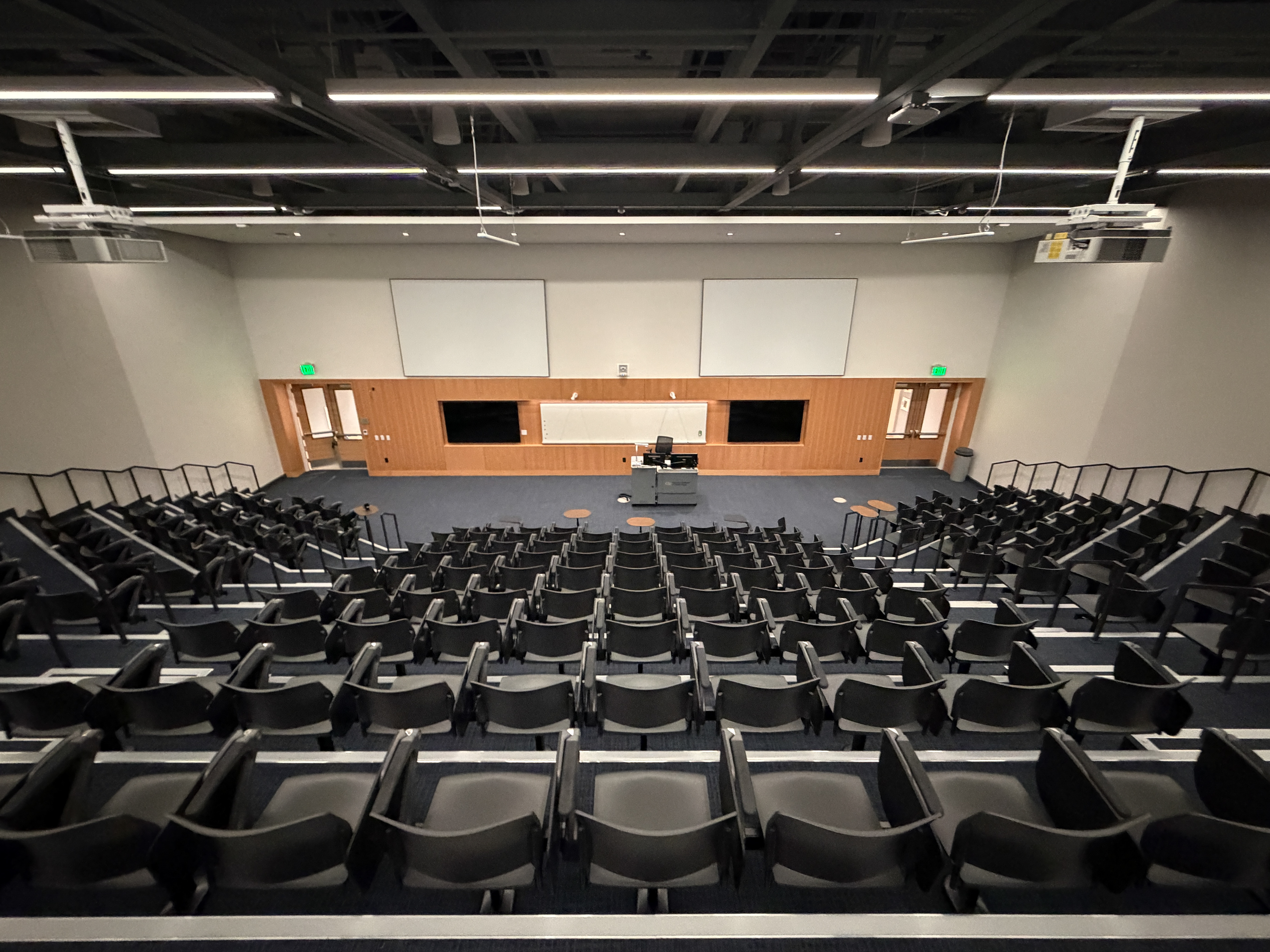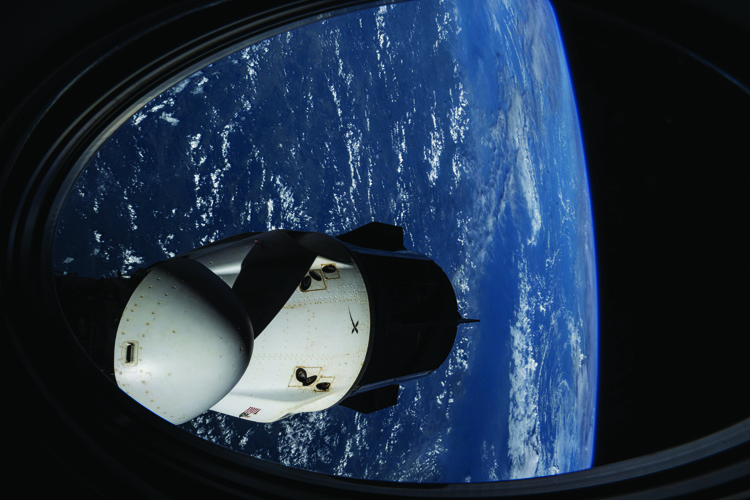Nothing Plain About These Airplanes
By: George Spencer | Categories: Featured Stories
We’re on the verge of a new era of aviation that promises faster, quieter, and more sustainable aircraft than ever before. Of course, Yellow Jackets are key players behind many of the innovative designs that are revolutionizing the industry.
JetZero's Z4
Goodbye, tube-and-wing jets. Hello, blended-wing-body (BWB) aircraft. JetZero imagines a future in which traditional airliners made by Boeing and Airbus are replaced by ones like its radically reshaped Z4. This 200- to 250-passenger jet will have the wingspan of a B-52, fly 5,000 nautical miles at up to 45,000 feet, and fit into existing airport gates. Dedicated bin space, digital viewscreens, and seats with forward views will add pizzazz. Bethany Davis, MBA 11, MS AE 11, heads the Z4 program.
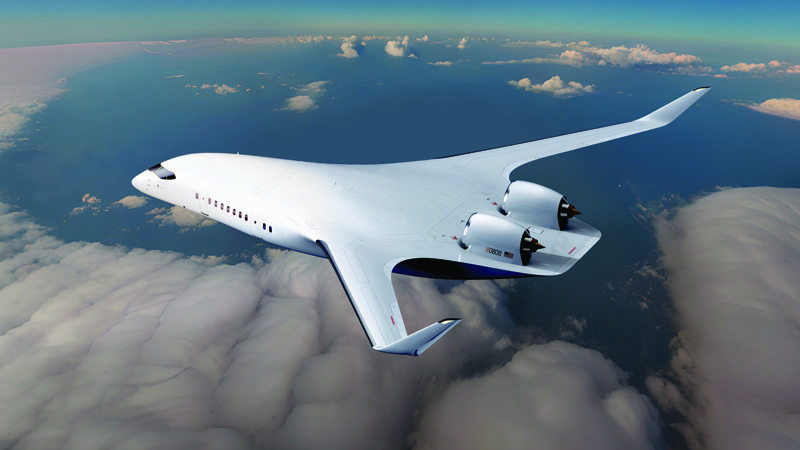
Fuel Saver
The most attractive aspect of this all-wing plane is its fuel efficiency. Thanks to a more aerodynamically shaped and lighter airframe than existing commercial jets, the Z4 will use 50 percent less fuel.
Quiet Inside & Out
It will also be quieter for people on the ground—and in the plane—because its two engines are pod-mounted on top of the aircraft.
In Demand
The U.S. Air Force has invested $235 million in the project. Delta, Alaska Airlines, and United have announced partnerships with JetZero, and United has already placed a “conditional” order for up to 200 of the planes, which will be manufactured at a $3.7 billion new factory in Greensboro, North Carolina.
“De-risking” is a key part of the Long Beach, California, company’s strategy. “We’re not trying to reinvent everything. The Z4 uses very standard electrical and hydraulic systems. They’re just organized into a different shape,” says Bethany Davis, MBA 11, MS AE 11, who heads the Z4 program and its FAA certification process.
A full-size experimental prototype of the plane will fly in 2027, and Davis believes the FAA will green-light the Z4’s airworthiness in time for the eye-popping plane to serve passengers in the early 2030s.
“JetZero will be the first to bring the blended wing to market,” says Davis, who previously served as director of Flight Innovation at Gulfstream Aerospace under president Bryan Moss, IM 62. “As Tesla did with electric cars, everybody else will follow suit. We believe that by 2050 all commercial airplanes will be this shape.”
X-59 "QUESST"
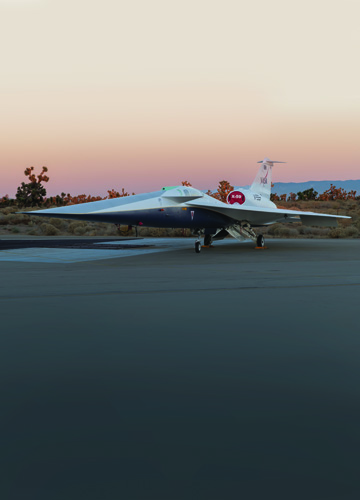 The X-59 is nosy but not intrusive. Its nickname Quesst (Quiet SuperSonic Technology) gives away the needle-nose jet’s purpose. Starting this year, the experimental craft will fly over U.S. cities at up to 925 m.p.h., about 1.4 times the speed of sound, without jarring people on the ground.
The X-59 is nosy but not intrusive. Its nickname Quesst (Quiet SuperSonic Technology) gives away the needle-nose jet’s purpose. Starting this year, the experimental craft will fly over U.S. cities at up to 925 m.p.h., about 1.4 times the speed of sound, without jarring people on the ground.
Supersonic nonmilitary flights over the U.S. have been banned for more than 50 years. The hope is that a less noticeable X-59 will open the door to relaxed regulations and commercial supersonic flights in jets modeled after the X-59.
Needle-Nose Design
The plane’s pointy proboscis, highly swept wings, canards (small wings in front of the cockpit), and all of its exterior features have been designed to tailor the way air flows around the aircraft. The 35-foot-long needle nose is slightly more than one-third the plane’s 99-foot length, but since it’s made of ultra-light carbon fiber composites, it weighs only 300 pounds.
No Front Window
While the X-59 borrows parts from other aircraft, such as landing gear from an F-16, it sports a novel innovation unrelated to its sound-dampening goal. Due to the plane’s sleek streamlining, the cockpit sits so low in the fuselage it has no forward-facing window. Pilots will see ahead thanks to an eXternal Vision System that will transmit images from cameras to a cockpit monitor.
The Thump
Instead of a sharp, sudden rifle-shot boom, the jet, according to computer simulations, will sound more like the muffled thump of a closing car door. NASA researchers on the ground will study people’s reactions.
“The number one requirement of the X-59 is that it have an acoustic characteristic that can be scaled up to a much larger product,” says Michael Buonanno MS AE 02, PhD AE 05, an aerospace engineer with Lockheed Martin. His company’s secretive Skunk Works advanced technology division has been crafting the X-59 in association with NASA since 2016.
“The shock waves are still shock waves, but they all stay carefully distinct and don’t merge into one very large shock wave,” says Buonanno. “Because they don’t coalesce, you get this thump rather than the loud boom.”
X-57 Maxwell
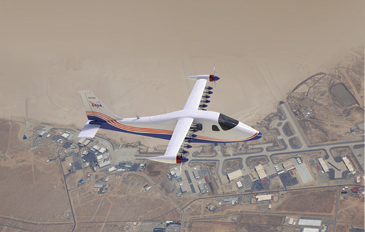 Some aircraft seed clouds to make rain. The X-57 Maxwell never flew, but it seeded ideas for the U.S. aviation industry with its innovative distributed propulsion technology. NASA wanted the four-seat aircraft to popularize short-hop flights by solving aerodynamic and propulsion problems that bedeviled electric aircraft developers. The problem is today’s batteries simply don’t have enough oomph to compensate for their weight in traditional aircraft designs.
Some aircraft seed clouds to make rain. The X-57 Maxwell never flew, but it seeded ideas for the U.S. aviation industry with its innovative distributed propulsion technology. NASA wanted the four-seat aircraft to popularize short-hop flights by solving aerodynamic and propulsion problems that bedeviled electric aircraft developers. The problem is today’s batteries simply don’t have enough oomph to compensate for their weight in traditional aircraft designs.
Innovative Electric Motors
So Nick Borer, MS AE 01, PhD AE 06, and his team at NASA’s Langley Research Center and Armstrong Flight Research Center came up with a startling strategy. Two large propellers at the wingtips would power the craft while cruising, but 12 wing-mounted propellers driven by electric motors would create more lift on takeoff and landing. In flight they would retract to smooth air flow over the wings.
“Even though we increased weight by adding 12 motors only used for takeoff and landings, the amount of drag we saved in cruising was so substantial, it was better than adding that amount of weight in batteries,” Borer says.
Mechanical issues with the motors forced NASA to ground the project before any test flights. Nonetheless, the Maxwell sparked change in the aviation industry.
Uplifting New Research
Joby Aviation, now a major player in the vertical takeoff-and-landing electric air taxi industry, got a boost when it won the contract to help design the plane. EP Systems, a leading U.S. aviation battery supplier, benefitted from its involvement as well. The X-57’s concept lives on in the Electra, an eight-engine electric plane that looks much like the Maxwell.
The more than 100 papers generated by Borer’s team have been a boon, too. “The neat thing about not chasing a profit at NASA is that we published all the warts along the way—all the stuff that broke and didn’t work,” recalls Borer.
The X-57’s academic reference platform still gets many requests. Tech professors Dmitri Mavis and Brian German in the School of Aerospace Engineering and Cedric Yves Justin and Evan Harrison with Tech’s Aerospace Systems Design Laboratory have all used findings from X-57’s saga in their research.
Hermeus' Chimera & Quarterhorse
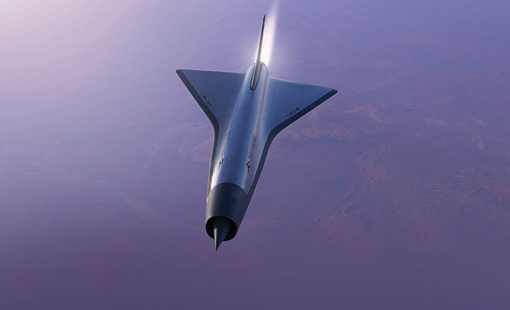 Hermeus is all about speed, in business and in flight. The Atlanta-based startup is racing to build the fastest aircraft in the world, jets capable of flying five times the speed of sound. Founded in 2018, the company has grown to more than 200 employees and soared past milestones that typically take aerospace companies years to reach.
Hermeus is all about speed, in business and in flight. The Atlanta-based startup is racing to build the fastest aircraft in the world, jets capable of flying five times the speed of sound. Founded in 2018, the company has grown to more than 200 employees and soared past milestones that typically take aerospace companies years to reach.
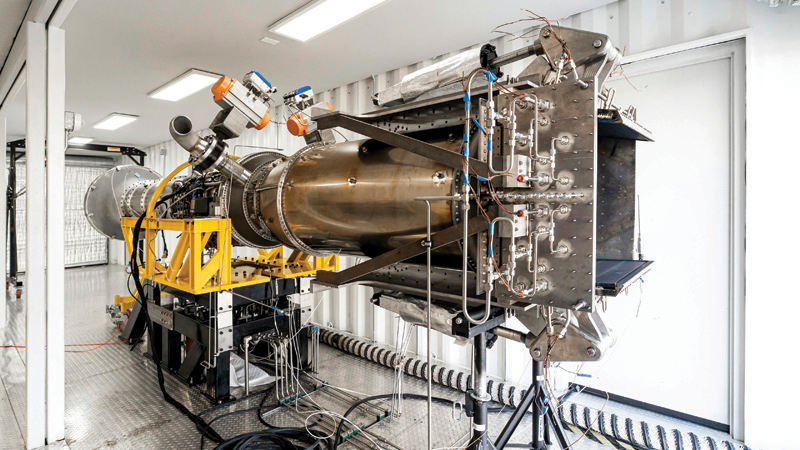
Their secret? A startup mentality and iterative design process, says AJ Piplica, AE 10, MS AE 12, cofounder and CEO. Hermeus isn’t trying to do “everything all at once,” he explains. Rather than investing years into a single aircraft that might fail during testing, Hermeus rolls out products quickly and more frequently, getting them into the air to solve complex development issues sooner. Two prime examples are Chimera, a hybrid turbojet-ramjet engine that will power their hypersonic jets, and Quarterhorse, the company’s progressive hypersonic flight program.
Rapid Iteration
Chimera will be flight-tested in the Quarterhorse Mk 3. The program includes four vehicles from Mk 0, which tested remote command and taxiing, to Mk 3, designed to demonstrate Chimera in flight and break the airspeed record held by SR-71. Hermeus built Mk 1 in less than a year and flight-tested it at Edwards Air Force Base earlier this year. Mk 2 is currently in development and is on track to fly later this year. “Flight data is hard to get for things that fly really fast, so it’s super important to get yourself up in the air and gather data as quickly as you can,” Piplica says.—Jennifer Herseim
Off-the-Shelf
Chimera modifies existing turbine engines, which allows Hermeus to tap into supply chains, reduce costs, and accelerate development.
Rotorcrafts are all the Rage
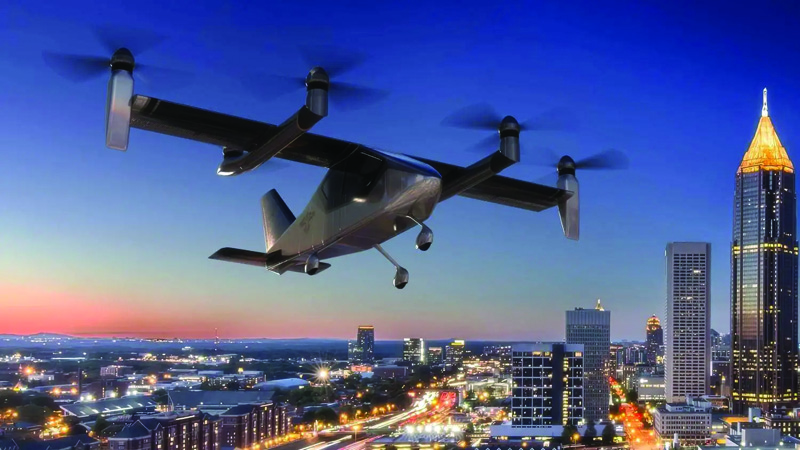
Stochastic. That’s a word aerospace engineering professor Marilyn Smith, AE 82, MS AE 85, PhD AE 94, uses when explaining her research as the director of Tech’s Vertical Lift Research Center for Excellence.
The term comes from the Greek word stókhos, which means guess. Smith does more than that. She applies interactional physics to solve outcomes of aircraft behaviors in wildly complicated aviation environments.
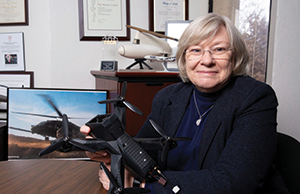 “Think of it as driving behind an 18-wheeler, and you get buffeted badly,” she says. “Now imagine you’re flying close to a building in the urban canopy, doing a shipboard landing, or near trees on a rescue mission. How do you make sure you control the aircraft, fly safely, protect your cargo, and mitigate wear-and-tear on the vehicle’s components?”
“Think of it as driving behind an 18-wheeler, and you get buffeted badly,” she says. “Now imagine you’re flying close to a building in the urban canopy, doing a shipboard landing, or near trees on a rescue mission. How do you make sure you control the aircraft, fly safely, protect your cargo, and mitigate wear-and-tear on the vehicle’s components?”
To find answers, she and her seven-university team of experts uses high-performance computing to perform Large Eddy Simulations. This mathematical model for replicating turbulence requires weeks and millions of computer hours of analysis.
Such studies of unsteady aerodynamics and computational aeroelasticity are backed by more than $200 million in funding from NASA, the NSF, and the Army and Navy. Smith and researchers from the University of Michigan and Washington University (St. Louis) and elsewhere study all manner of aircraft—rotary-wing, fixed wing, and rocket-powered launch vehicles.
“We call what we study aeromechanics because it includes aerodynamics, structural dynamics, acoustics, and handling qualities. You can’t just do one. You have to do all of it,” she says.
Rotorcraft hybrids of helicopters and planes play a prominent role in her research. Some of their concepts date to the 1940s. They never flew because lightweight composite materials, supercomputing power, and electric propulsion didn’t exist then.
“I’ve worked on everything through my career from fighters and military transports to launch vehicles, rotorcraft, and various things I can’t talk about,” says Smith, who admires the multi-functionality of rotorcraft. “Their military component helps save soldiers’ lives,” she says. “We saw their many life-saving capabilities beyond that in the Texas floods, where Blackhawk helicopters rescued people in trees.”
After nearly 50 years at Tech, Smith will retire in 2026. Like many AE students in the 1970s, she wanted to work for NASA. Her hero was Scotty, the engineer on Star Trek. “But when I got into aviation, it completely changed what I wanted to do.”
Photo: Marilyn Smith, AE 82, MS AE 85, PhD AE 94.

